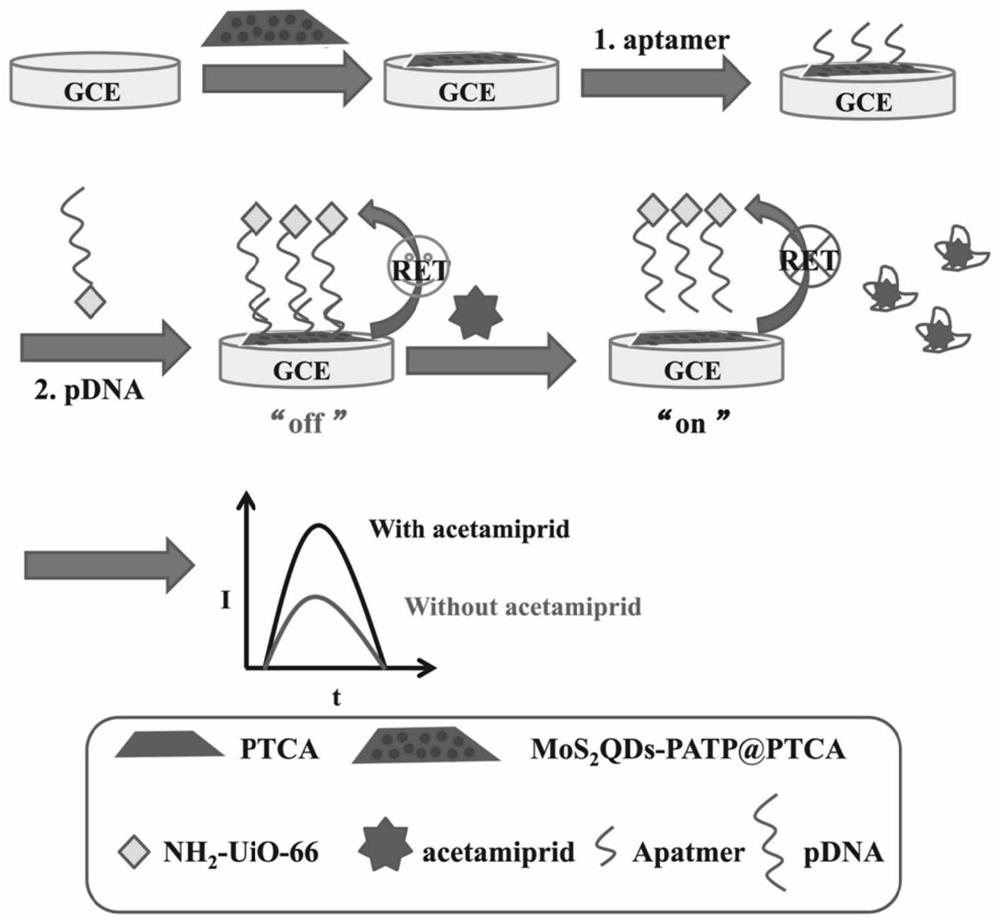Sensor for detecting acetamiprid based on electrochemical luminescence method as well as preparation method and application
An acetamiprid and electrochemical technology, which is applied in the field of sensors for detecting acetamiprid based on electrochemiluminescence and its preparation and application, can solve the problems of low sensitivity, complicated operation, high cost, etc., and achieve wide detection range and high sensitivity , the effect of low detection limit
- Summary
- Abstract
- Description
- Claims
- Application Information
AI Technical Summary
Problems solved by technology
Method used
Image
Examples
Embodiment
[0034] (1)MoS 2 Preparation of QDs-PATP@PTCA composites:
[0035] 0.25g of Na 2 MoO 4 2H 2 O was dissolved in 20 mL of water and adjusted to pH 6.5 with 0.1 M HCl. After sonication for 10 min, 0.5 g of cysteine and 40 mL of deionized water were added. The above mixture was transferred to a 100 mL polytetrafluoroethylene autoclave, reacted at 200 °C for 36 h, cooled naturally to room temperature, centrifuged at 10000 rpm for 20 min, and the supernatant was taken and stored at 4 °C. Dissolve 125 mg of 4-aminothiophenol (PATP) in 10 mL of ethanol solution, and inject it into 10 mL of fluorescent molybdenum disulfide quantum dots (MoS 2 QDs) solution, stirred for 6 h in the dark. Washed with ethanol, centrifuged, separated, and the final MoS 2 QDs-PATP was dispersed in ethanol (1 mg / mL).
[0036] Dissolve 0.1g of perylenetetracarboxylic dianhydride (PTCDA) in 10mL of 0.1M NaOH, stir at 80°C for 2h, after obtaining a yellow-green solution, add 1.0M HCl dropwise until comp...
PUM
 Login to View More
Login to View More Abstract
Description
Claims
Application Information
 Login to View More
Login to View More - R&D
- Intellectual Property
- Life Sciences
- Materials
- Tech Scout
- Unparalleled Data Quality
- Higher Quality Content
- 60% Fewer Hallucinations
Browse by: Latest US Patents, China's latest patents, Technical Efficacy Thesaurus, Application Domain, Technology Topic, Popular Technical Reports.
© 2025 PatSnap. All rights reserved.Legal|Privacy policy|Modern Slavery Act Transparency Statement|Sitemap|About US| Contact US: help@patsnap.com



